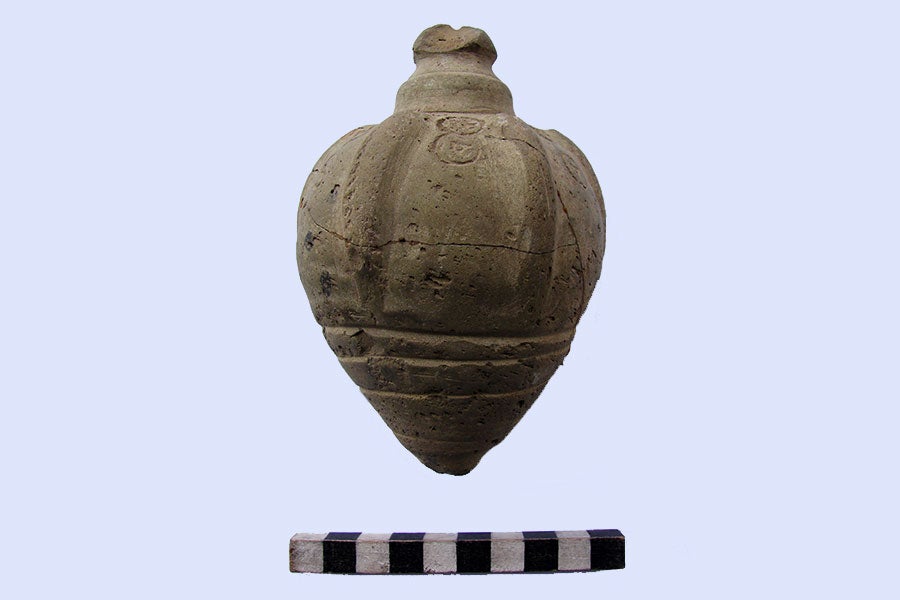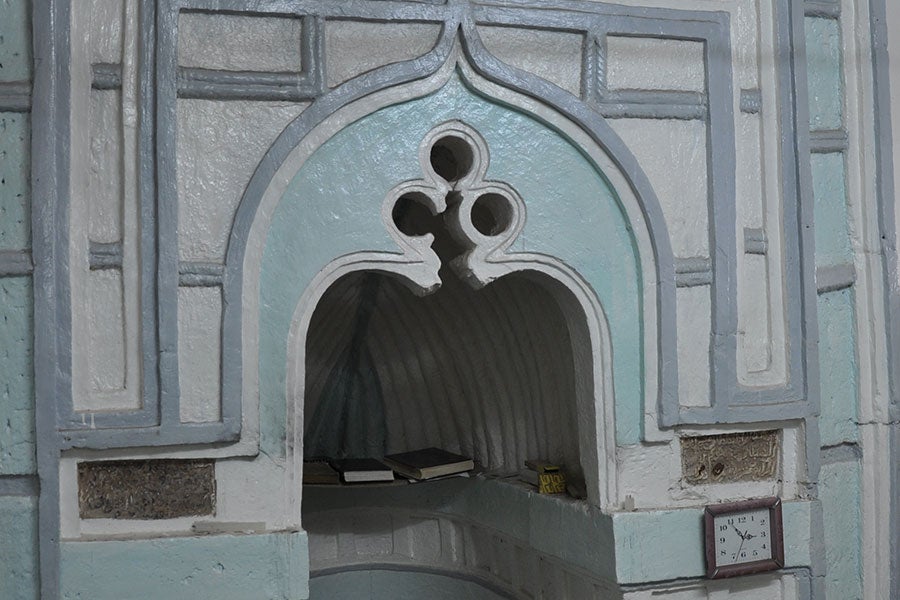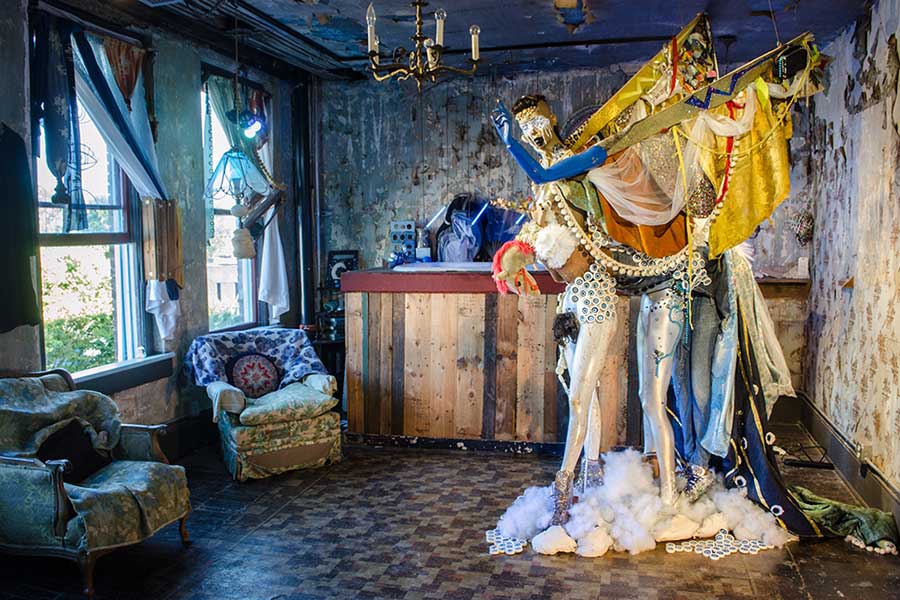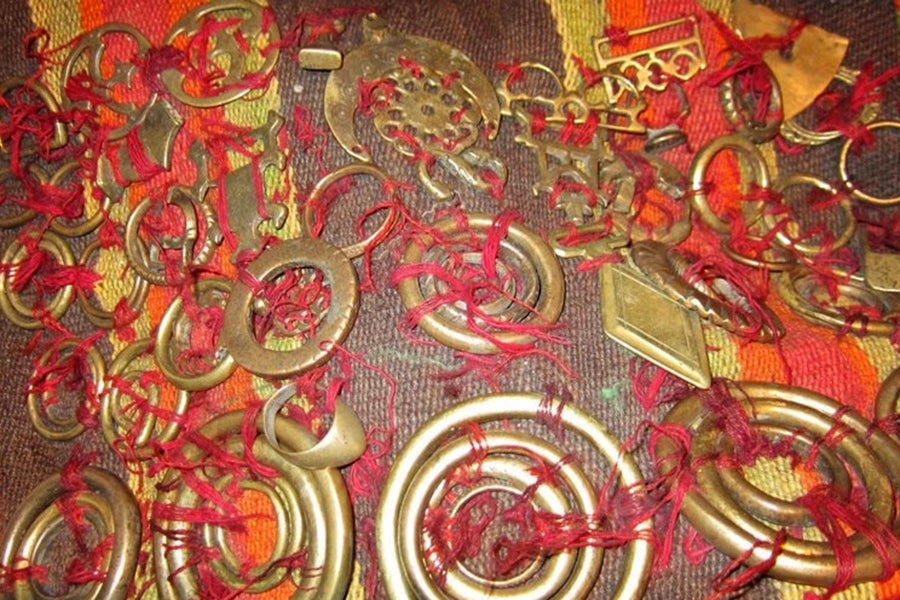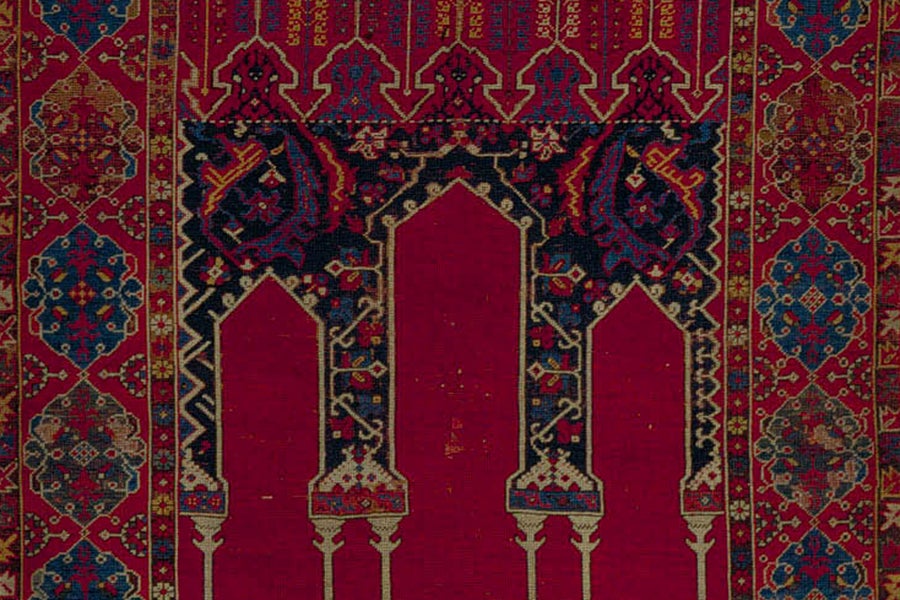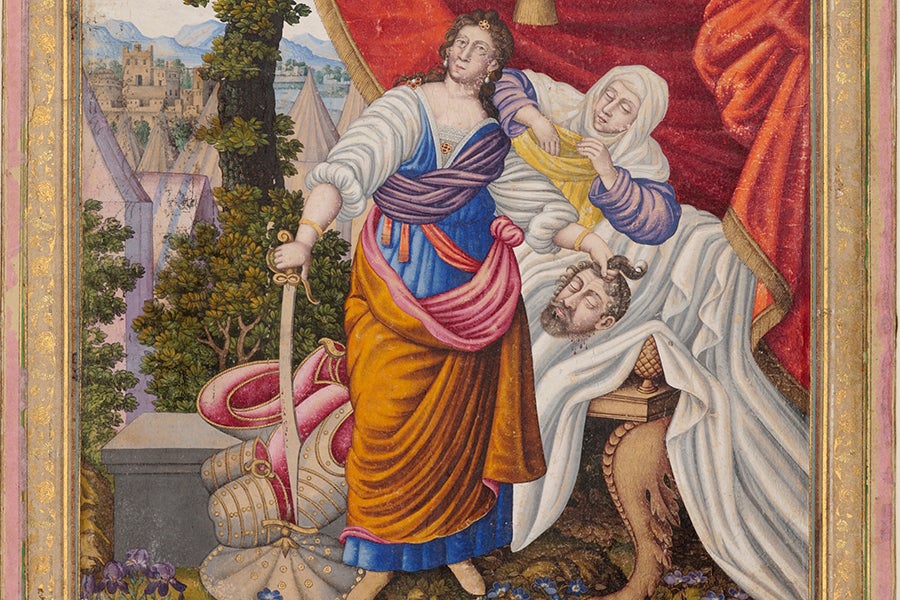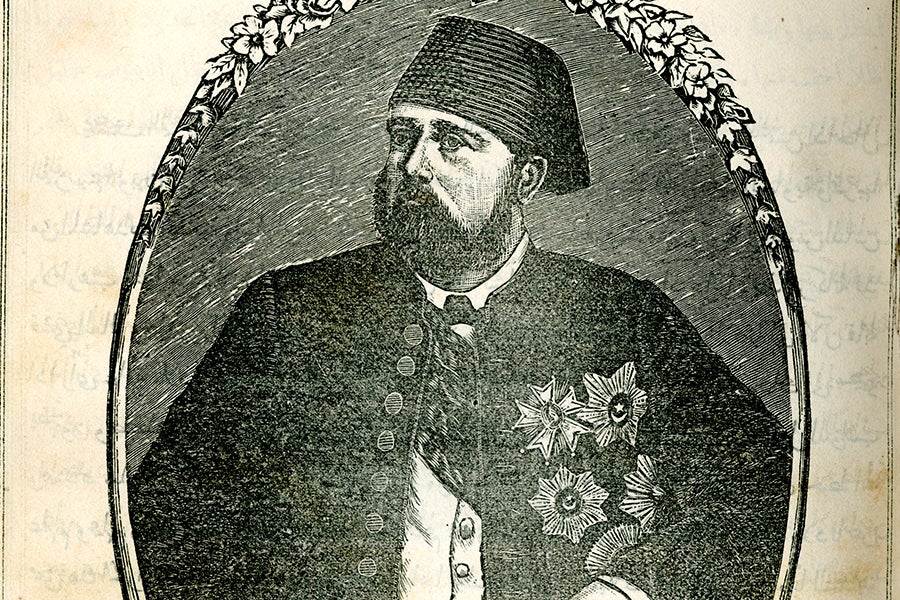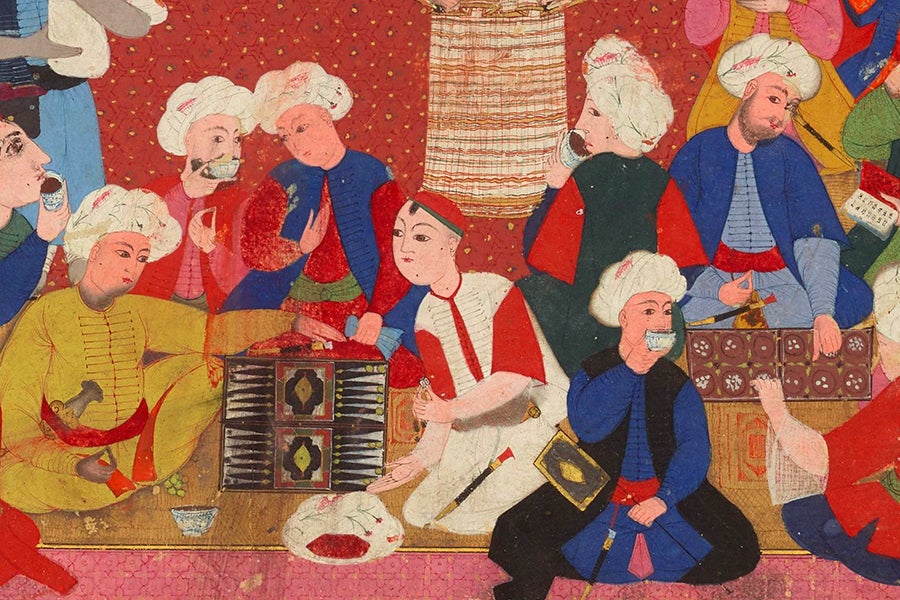Sphero-Conical Vessels: Evidence from Baalbek (Lebanon) Valentina Vezzoli Synopsis: This presentation provides a general introduction to sphero-conical vessels, interpretations of their various uses, and related archaeological evidence, with a particular focus on the collection issued from the site of Baalbek in Lebanon. Scholars have suggested that these ceramic objects may have been used for different…
Category: Topics
Swahili Mosques Between Sub-Saharan Africa and the Indian Ocean
Swahili Mosques Between Sub-Saharan Africa and the Indian Ocean Stéphane Pradines Synopsis: Running along the East African coast, Swahili mosques count among the best examples of Islamic architecture in Sub-Saharan Africa. The study of the Swahili architecture allows us to analyze the diffusion of ideas, people, and material cultures in the Indian Ocean, as well…
Saba Taj’s Interstellar Uber // Negotiations with God
Saba Taj’s Interstellar Uber // Negotiations with God: Queer Articulations in Contemporary Islamic Art Sascha Crasnow Synopsis: This talk introduces queer expressions in contemporary Islamic art through an analysis of Saba Taj’s multi-media kinetic sculpture Interstellar Uber // Negotiations with God. The work, which depicts al-Buraq, the human-headed steed upon which Muhammad rode during his…
The Nîshans of the Yezidis of Northern Iraq
The Nîshans of the Yezidis of Northern Iraq Eszter Spät Synopsis: This presentation explores the nature and role of the nîshans or sacred objects of the Yezidi “priestly” lineages in Northern Iraq. Such nîshans, literally meaning “signs,” are also referred to as hadimas or “seals.” They function both as symbols and proofs of the special descent of the…
Prayer Carpets
Prayer Carpets Sumru Belger Krody Synopsis: This presentation focuses on a type of textile object that is an integral part of Islamic devotion: namely, the prayer carpet. Textiles in Islamic society fulfill far more than the functions normally expected of them. Among them, prayer carpets hold a special place. These knotted-pile carpets are placed on…
The Depiction of European Women in Late Safavid Paintings
The Depiction of European Women in Late Safavid Paintings Negar Habibi Synopsis: This talk presents a group of 17th-century Persian paintings made in the farangi-sazi or Occidentalist style. It focuses in particular on depictions of females whose iconography is of European origins. Inspired by the print medium, some of these compositions recall Persian depictions of…
Hajj Materials and Rites from Egypt
Hajj Materials and Rites from Egypt Richard McGregor Synopsis: The pre-modern pilgrimage to Mecca, or hajj, included several public rituals that contributed significantly to Islamic visual culture. Perhaps the two most prominent were those associated with the mahmal (litter) and the kiswa (covering) of the Ka‘ba. For centuries, both of these textile objects were produced in Egypt, and celebrated with…
Manufactured Images: The Engravings of 19th-Century Arabic Periodicals
Manufactured Images: The Engravings of 19th-Century Arabic Periodicals Hala Auji Synopsis: Explore the diversity of printed images that became popular in illustrated Arabic journals during the late nineteenth century. These engravings, which included a range of topics from scientific diagrams to illustrations of zebras, exemplify the interconnected nature of the arts and sciences in the…
The Birth Scene of Iskandar (Alexander the Great)
The Birth Scene of Iskandar (Alexander the Great) Ayşin Yoltar-Yıldırım Synopsis: Museum collections often include works that are unidentified or inadequately studied. This presentation chases the source of an interesting birth scene depicted on a detached manuscript page, now held in the Brooklyn Museum, to an episode described in Nizami’s Iskandarnama (Book of Alexander). References: Milstein, Rachel.…
Coffee and Coffeehouses in Ottoman and Safavid Lands, 1500-1800
Coffee and Coffeehouses in Ottoman and Safavid Lands, 1500–1800 Farshid Emami Synopsis: A plant native to the highlands of Ethiopia, coffee was first consumed as a hot beverage in the Yemen during the fourteenth or fifteenth century. During the sixteenth century, the new drink spread beyond the Arabian Peninsula and coffeehouses proliferated in the eastern…


